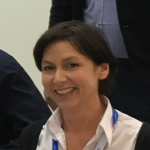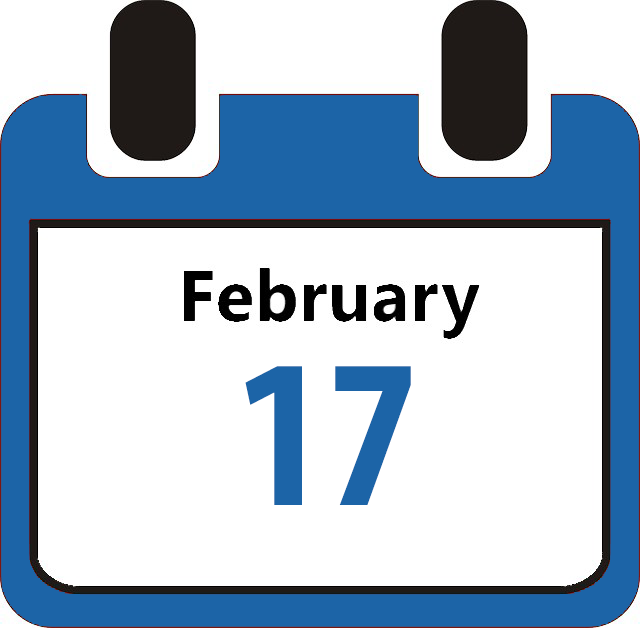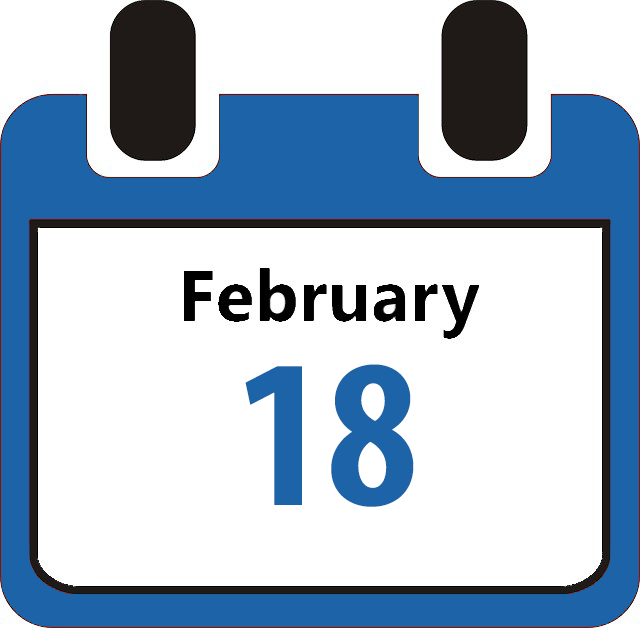We value your privacy
We use cookies to enhance your browsing experience, serve personalised ads or content, and analyse our traffic. By clicking "Accept All", you consent to our use of cookies.
We use cookies to help you navigate efficiently and perform certain functions. You will find detailed information about all cookies under each consent category below.
The cookies that are categorised as "Necessary" are stored on your browser as they are essential for enabling the basic functionalities of the site. ...
Necessary cookies are required to enable the basic features of this site, such as providing secure log-in or adjusting your consent preferences. These cookies do not store any personally identifiable data.
No cookies to display.
Functional cookies help perform certain functionalities like sharing the content of the website on social media platforms, collecting feedback, and other third-party features.
No cookies to display.
Analytical cookies are used to understand how visitors interact with the website. These cookies help provide information on metrics such as the number of visitors, bounce rate, traffic source, etc.
No cookies to display.
Performance cookies are used to understand and analyse the key performance indexes of the website which helps in delivering a better user experience for the visitors.
No cookies to display.
Advertisement cookies are used to provide visitors with customised advertisements based on the pages you visited previously and to analyse the effectiveness of the ad campaigns.
No cookies to display.
This presentation, “Lassoism & DITA: Winning with Knowledge Graphs” explores how the principles of teamwork and optimism, inspired by Ted Lasso, apply to integrating DITA and Knowledge Graphs. It highlights the benefits of structured, reusable content in DITA and the power of Knowledge Graphs for connecting data and enhancing content discoverability. By leveraging automation and overcoming challenges, the synergy between these technologies creates a winning strategy for content management, ensuring smarter workflows, improved user experiences, and future-ready content delivery.
Sweta Bhagat, ServiceNow

Sweta Bhagat is an integral part of the Experience team at ServiceNow, bringing over 17 years of experience in technical writing. She excels in collaborating with cross-functional teams to deliver exceptional product experiences for end-users. Combining problem-solving skills with a content strategist mindset, she brings a mix of tech smarts and creative flair to the table, spreading her craft excellence to her team, sharing information, and finding solutions that help the entire community in the Experience team.
The quality of your technical content directly impacts how users experience your product. This presentation will cover the top writing and editing best practices that will elevate the clarity, consistency, and effectiveness of your content. I’ll dive into common mistakes to avoid, along with techniques for writing clear, concise documentation that resonates with your audience. Attendees will also learn how to set up structured editing and peer review processes that maintain high content standards across teams.
Dipo Ajose-Coker
 After relocating to France in 2005, Dipo completed an MA in Multilingual and Multimedia Document Conception at the Université Paris Cité. He then spent 18 years combining his love for language and IT skills in various roles, serving as a structured and unstructured content technical writer, DITA migration project leader, technical editor, and proofreader in the Fintech and MedTech device industries.
After relocating to France in 2005, Dipo completed an MA in Multilingual and Multimedia Document Conception at the Université Paris Cité. He then spent 18 years combining his love for language and IT skills in various roles, serving as a structured and unstructured content technical writer, DITA migration project leader, technical editor, and proofreader in the Fintech and MedTech device industries.
In 2021, Dipo transitioned into Content Creation and Marketing. Acting as the crucial link between developers and the end users, occupying the sweet spot between expectation and delivery, Dipo represents both the voice of the user and that of the software developer, acting as the quintessential middleman.
Dipo was, most recently, the Product Marketing Manager at MadCap Software, shepherding an ecosystem of Technical Documentation and Learning & Development authoring tools and component content management systems.
Feel free to connect with and follow Dipo on LinkedIn: https://www.linkedin.com/in/dipocoker/
As organizations grapple with the complexities of connecting disparate data systems, Data Fabric technologies emerge as a promising solution. This session will delve into the parallels between Data Fabric and DITA, highlighting shared principles such as flexibility, reusability, and metadata-driven automation.
A panel of experts from the Content Component Alliance (CCA) will examine the relationship between DITA and Data Fabric, exploring how structured content standards can enhance user experiences and support robust business analysis, and discussing the impact of recent AI advancements on Data Fabric architectures.
Join us to uncover how integrating DITA with Data Fabric technologies can unlock new possibilities for data connectivity and analysis in an increasingly complex digital landscape.
Audience key takeaways:
Toni Byrd Ressaire, Technically Write IT
Laura Katajisto, Etteplan
Fabrice Lacroix, Fluid Topics
Benjamin von Deschwanden, Acodis

Toni Byrd Ressaire is an enthusiastic innovator, educator, and consultant who believes in the power of information and innovation to drive business. She teaches Advanced Technical Writing in the MSc program at Munster Technological University (MTU) in Ireland. Toni is Director of Innovation at Technically Write IT (TWi), a content consultancy and services company based in Ireland.
 Laura Katajisto has over 20 years of experience in the field of technical communication, yet she’s never aged a day. She’s explored the intricacies of technical communication from both business and IT perspectives, beginning her career as a technical writer and information designer before advancing to development roles specializing in DITA, CCMS, and digital content delivery. Presently, Laura holds the position of Lead Information Architect at Etteplan. In this role, she owns the end-to-end processes related to information throughout its lifecycle and is responsible for Etteplan’s information architecture, among other duties. She also serves as a product owner in Etteplan’s AI development initiatives. Laura has long had board roles in the Finnish Technical Communication Society, and still dreams of writing her PhD in DITA.
Laura Katajisto has over 20 years of experience in the field of technical communication, yet she’s never aged a day. She’s explored the intricacies of technical communication from both business and IT perspectives, beginning her career as a technical writer and information designer before advancing to development roles specializing in DITA, CCMS, and digital content delivery. Presently, Laura holds the position of Lead Information Architect at Etteplan. In this role, she owns the end-to-end processes related to information throughout its lifecycle and is responsible for Etteplan’s information architecture, among other duties. She also serves as a product owner in Etteplan’s AI development initiatives. Laura has long had board roles in the Finnish Technical Communication Society, and still dreams of writing her PhD in DITA.
 Fabrice Lacroix is a serial entrepreneur and a web pioneer. He has been working for 25 years on the development of innovative solutions around search technology, content enrichment and AI. He is the founder of Fluid Topics, the leading Content Delivery Platform that reinvents how users search, read and interact with technical documentation.
Fabrice Lacroix is a serial entrepreneur and a web pioneer. He has been working for 25 years on the development of innovative solutions around search technology, content enrichment and AI. He is the founder of Fluid Topics, the leading Content Delivery Platform that reinvents how users search, read and interact with technical documentation.
Benjamin von Deschwanden is Co-founder and CPO of Acodis based in Switzerland.
Benjamin is driven by the belief that cutting-edge Document AI technologies have the potential to revolutionize how businesses handle information, streamline workflows, and enhance decision-making processes.
With a background in Computer Science and Teaching Assistant at ETH Zurich, Benjamin co-founded Acodis in 2016 with the mission to turn any documents into value. In his current role as Chief Product Officer at Acodis, he is spearheading the development of groundbreaking products that redefine the way we interact with documents, transforming the future of document processing as we know it.
Users have no trouble finding information—they can simply open a manual or search online. The real challenge comes when they need to decide if the information they find, or receive from a chatbot, is truly relevant to their specific situation. Often, users encounter information meant for different tasks, product models, software/hardware variants, or user roles. While they can sometimes quickly dismiss irrelevant content, this process can be confusing and lead them to mistakenly believe some information applies to their case, when an expert would say otherwise. This tedious search process makes it difficult to find the right information and, in some cases, acting on incorrect information can even cause harm. Supporting users in finding relevant content for their specific machine model online is especially important with the introduction of the new EU Machinery Regulation 2023/1230.
What if a content delivery portal could automatically filter out all irrelevant topics, ensuring that users only see information tailored to their work tasks, product model, software/hardware variant, and role in any given situation?
In this presentation, we will showcase a topic-based content delivery portal aimed at improving user satisfaction. The design of the topic architecture and portal features is grounded in academic research on user search and reading behaviors. We will demonstrate how user assistance can be optimized by automatically filtering out irrelevant content based on the user’s role and product serial number. This method ensures users receive only the information they need, streamlining their search process and enhancing their overall experience. This presentation addresses challenges and solutions related to compliance with the new EU Regulation 2023/1230 on machinery and offers valuable insights into the impact on information architecture and content creation.
Jonatan Lundin, Excosoft
 Jonatan is a senior information architect specializing in technical communication, currently working at Excosoft in Sweden. He earned his PhD in 2020 from Mälardalen University, focusing on the design of manuals. With over 30 years of experience in the field, Jonatan has primarily worked with topic-based XML content management. As a former member of OASIS, he contributed to the development of DITA 1.2 through the Machine Industry Subcommittee. As a regular speaker at major technical communication conferences, including SIGDOC, ISDOC, tcworld, NORDIC Techkomm, STVY, FTI, DITA Europe, and STC India, Jonatan enjoys engaging with peers to explore design challenges and innovations in the field.
Jonatan is a senior information architect specializing in technical communication, currently working at Excosoft in Sweden. He earned his PhD in 2020 from Mälardalen University, focusing on the design of manuals. With over 30 years of experience in the field, Jonatan has primarily worked with topic-based XML content management. As a former member of OASIS, he contributed to the development of DITA 1.2 through the Machine Industry Subcommittee. As a regular speaker at major technical communication conferences, including SIGDOC, ISDOC, tcworld, NORDIC Techkomm, STVY, FTI, DITA Europe, and STC India, Jonatan enjoys engaging with peers to explore design challenges and innovations in the field.
ServiceNow maintains a corporate taxonomy for its products, which was only weakly reflected in the product documentation. As part of a larger corporate information customer satisfaction improvement initiative, Product Content implemented a process to classify the ServiceNow Platform product documentation using the taxonomy. This process involved both automatic and authored classification, including the use of SubjectScheme maps to drive both authoring and delivery of content on servicenow.com/docs. This paper presents the implementation decisions we made, describes how our classification processes works, and outlines the governance and maintenance processes for managing the classifications as the taxonomy and content evolves.
Eliot Kimber & Scott Hudson, ServiceNow
 Eliot Kimber is a founding and current member of the DITA Technical Committee and a long-time speaker and writer on DITA and other structured markup subjects. Eliot has worked to apply DITA to many different industries, including commercial publishing as well as many different technical domains. Eliot is co-editor of ISO/IEC 10744:1996, HyTime, and a founding member of the W3C XML Working Group. When not bending DITA-based publishing systems to his will, Eliot lives in Austin, Texas with his wife and daughter. Eliot holds a black belt in Aikido and is an avid cook.
Eliot Kimber is a founding and current member of the DITA Technical Committee and a long-time speaker and writer on DITA and other structured markup subjects. Eliot has worked to apply DITA to many different industries, including commercial publishing as well as many different technical domains. Eliot is co-editor of ISO/IEC 10744:1996, HyTime, and a founding member of the W3C XML Working Group. When not bending DITA-based publishing systems to his will, Eliot lives in Austin, Texas with his wife and daughter. Eliot holds a black belt in Aikido and is an avid cook.
 Scott Hudson is a Senior Staff Technical Content Architect at ServiceNow. He is also a long-time member of the OASIS DocBook and DITA Technical Committees. He specializes in content architecture, optimizing the DITA authoring experience, creating author assistance using Schematron and Vale, and evaluating new information technologies. He is a shameless Sci-Fi geek and head referee for Colorado FIRST Lego League. Visit his blog at: http://shudson310.blogspot.com
Scott Hudson is a Senior Staff Technical Content Architect at ServiceNow. He is also a long-time member of the OASIS DocBook and DITA Technical Committees. He specializes in content architecture, optimizing the DITA authoring experience, creating author assistance using Schematron and Vale, and evaluating new information technologies. He is a shameless Sci-Fi geek and head referee for Colorado FIRST Lego League. Visit his blog at: http://shudson310.blogspot.com
To control the carbon footprint of technical content, we must understand what content is delivered, to whom, and in which formats and channels, and also why. That does not mean we need to compromise with our audiences’ requirements. For example, designing answers that are easy to find will improve our footprint and will also provide a better User Experience to our end-users.
Minimalistic content requires good findability of the content, practical, user-focused tasks and error resistance… Content professionals need to embrace minimalism and bring instructional design into play to create and deliver “greener”, and frankly, more user-friendly documentation. We’ll be talking about instructional design best practices, plain language and controlled terminology.
Nolwenn Kerzreho, MadCap Software
 Nolwenn Kerzreho is IXIA CCMS Solutions Architect for MadCap Software. She has experience helping DITA adoption and CCMS adoption projects in a variety of industries, regulated or not, for Fortune 500 companies worldwide.
Nolwenn Kerzreho is IXIA CCMS Solutions Architect for MadCap Software. She has experience helping DITA adoption and CCMS adoption projects in a variety of industries, regulated or not, for Fortune 500 companies worldwide.
What tools do you use to analyze large volumes of DITA XML for conversion or migration projects? Do you use CCMS built-in features, Oxygen tools, XQuery, or XSL to parse through copious quantities of content? What if you could leverage common desktop tools in a very uncommon way to pull out problematic patterns in your XML or generate volumes of valid DITA?
Rob Hanna has developed robust techniques for using Microsoft Excel over the past 20 years to plan, analyze, refactor, and execute large DITA XML projects. In this session, Rob will demonstrate some of the tools he has built in MS Excel to create content plans and build DITA stub topics to analyzing links, structures, and syntax for large collections of DITA XML. He will walk through beginner steps towards parsing through text-based content to build out XML strings and code using only native Excel features and formulas. He will take the session participants through some very basic Excel VBA code using MS XML to walk an XML tree and validate DITA XML.
Rob Hanna, Precision Content
 Rob Hanna has dedicated his professional life to improving outcomes for teams embarking on structured authoring projects. Over the past 30 years, he has worked with many large corporations on DITA and CCMS projects to bring their teams into structure and drive operational efficiencies. He has taught metadata and taxonomies at the University of Toronto and private courses on structured authoring, DITA, and information architecture. In 2013, Rob founded Precision Content in Toronto, Canada, to build a team of writers, developers, and IAs to continue his mission to raise the bar in Technical Communication.
Rob Hanna has dedicated his professional life to improving outcomes for teams embarking on structured authoring projects. Over the past 30 years, he has worked with many large corporations on DITA and CCMS projects to bring their teams into structure and drive operational efficiencies. He has taught metadata and taxonomies at the University of Toronto and private courses on structured authoring, DITA, and information architecture. In 2013, Rob founded Precision Content in Toronto, Canada, to build a team of writers, developers, and IAs to continue his mission to raise the bar in Technical Communication.
How do we make sure that user interface text follows the company style guide?
If you work at a large company, you may have access to style checks via your CMS, localization management platform, or commercial language quality tools – but what if you don’t have that kind of budget?
Many of these solutions are designed to work with long-form text in technical documentation, support articles, or other web content but what about UI text?
How can we catch errors in the design phase before UI concepts are handed off to developers? How can we help developers to follow best practices and custom style rules? How can we make sure the content team notices when strings are updated? How can we build content quality gates into our review workflows?
We’ll explore how open-source tools can be used to streamline the QA process, allowing lone writers, small teams, and larger organizations to keep UI copy consistent, and do more with less.
Roger Fienhold Sheen, infotexture

Roger is a Content Operations consultant helping teams to design product information that is easy to understand, re-use, and maintain. He advises clients on how writers, designers, and developers can work together to create high-quality product content.
In his spare time, he serves as the documentation lead for the DITA Open Toolkit project.
DITA is an open standard that is supported by a variety of tools for authoring and publishing. But often, there is a need to deliver DITA content to another system, which does not necessarily speak DITA, for example, a different CCMS or a content delivery platform. Like DITA, iiRDS is an open standard that allows you to exchange content using a standardized format and metadata vocabulary. By combining DITA and iiRDS, you get a powerful, standard-based solution to deliver your content.
In this presentation, we will use the latest iiRDS plugin for the DITA Open Toolkit. We will see how the plugin builds iiRDS packages from any DITA files. We’ll also dive right into iiRDS packages and see how iiRDS metadata annotates content and relates to your metadata in DITA.
Mark Schubert & Marion Knebel, parson AG
 Mark Schubert is a technical consultant at parson and supports clients regarding authoring tools and publishing solutions. DITA, DocBook, and other document type definitions are part of his daily routine. Due to his experience as a technical communicator, he knows XML-based authoring firsthand. Mark has been an acting member of the iiRDS working groups from the start and was head of working group Development for five years. Currently, he is a member of the iiRDS working groups Development and Tools. As an iiRDS Ambassador he is participating in working groups of the Industrial Ontologies Foundry IOF.
Mark Schubert is a technical consultant at parson and supports clients regarding authoring tools and publishing solutions. DITA, DocBook, and other document type definitions are part of his daily routine. Due to his experience as a technical communicator, he knows XML-based authoring firsthand. Mark has been an acting member of the iiRDS working groups from the start and was head of working group Development for five years. Currently, he is a member of the iiRDS working groups Development and Tools. As an iiRDS Ambassador he is participating in working groups of the Industrial Ontologies Foundry IOF.
 As technical writer and consultant, Marion Knebel supports customers from the IT industry to create and optimize their structured content. While authoring content is still a part of her daily business, she also designs and implements information architectures, for example, by providing customized DITA schemas and developing metadata concepts to publish the content in a content delivery system.
As technical writer and consultant, Marion Knebel supports customers from the IT industry to create and optimize their structured content. While authoring content is still a part of her daily business, she also designs and implements information architectures, for example, by providing customized DITA schemas and developing metadata concepts to publish the content in a content delivery system.
Replacing an existing toolchain with a financially less demanding one could bring trouble, even if the documentation source format can be retained. While you ponder about ways to make this happen, you know that business as usual must continue. Ideally, no one should even notice that anything has happened under the hood.
Going from a proprietary publishing engine to purely open source is what we aimed for, implementing a solution based on the DITA Open Toolkit. Challenges and solutions are presented.
Frank Wegmann, Software AG
 Frank Wegmann has 20+ years of experience in the markup world. At Software AG, he has been advancing custom automated build systems for technical documentation since 2001, in recent years with more focus on DITA. He is a regular speaker at international conferences and engaged in OASIS DITA committees, now also as co-chair of the Lightweight DITA subcommittee.
Frank Wegmann has 20+ years of experience in the markup world. At Software AG, he has been advancing custom automated build systems for technical documentation since 2001, in recent years with more focus on DITA. He is a regular speaker at international conferences and engaged in OASIS DITA committees, now also as co-chair of the Lightweight DITA subcommittee.
As organizations evolve their digital tools to manage and deliver complex technical documentation, the need for intelligent content systems is becoming more critical. This presentation, “Contextualizing DITA with iiRDS-based RAG and Generative AI for the Service Chatbot,” explores how the combination of structured content management, intelligent metadata standards, and advanced AI can drive more effective customer support.
The presentation will focus on how DITA and iiRDS can be leveraged together to enhance the accessibility and relevance of content through dynamic, context-sensitive delivery. By linking DITA-based content with iiRDS metadata, technical editors can enable more sophisticated, user-specific information retrieval systems that meet the needs of modern digital ecosystems.
We will also introduce Retrieval-Augmented Generation (RAG), a cutting-edge method that combines generative AI with information retrieval. Unlike traditional generative AI models, which can sometimes generate inaccurate or irrelevant information, RAG ensures that chatbot responses are grounded in structured, accurate content. This is particularly valuable for technical support chatbots, where accuracy is paramount. By integrating RAG with DITA and iiRDS, organizations can ensure that chatbot interactions are contextually aware, accurate, and based on up-to-date technical documentation.
Throughout the presentation, we will demonstrate how service chatbots can leverage this integration to provide real-time, context-specific answers. We will explore several use cases, including technical support, context-sensitive documentation delivery, and troubleshooting, illustrating how this combination of technologies can streamline customer support workflows and improve the user experience.
In conclusion, this presentation provides a practical approach for technical editors and content managers looking to harness structured content and generative AI to develop intelligent service chatbots that deliver highly accurate, efficient, and context-driven support.
Markus Kronfellner, Ninefeb
Helmut Nagy, Graphwise

Markus is an Information Architecture Consultant for NINEFEB. He spent in different companies like Philips as well as OMV in responsible roles till he joined NINEFEB, consulting iiRDS, DITA interfaces to taxonomies and iiRDS in different realisation projects, setting up metadata schemes in DITA, elaborating taxonomic structures via subject schemes and connecting them via iiRDS to Knowledge graphs.
He is a university lecturer on Knowledge Graphs, iiRDS and taxonomies, teaching Knowledge Graphs and Technical Writing.
 Helmut is VP Sales Enablement at Graphwise, the vendor of the PoolParty Semantic Suite and GraphDB. Graphwise has offices in Vienna, Sofia and New York. Graphwise’s products are used by over 200 organisations to provide semantic AI solutions. Helmut is a well-known expert in the field of knowledge management and semantic AI. He has worked with global organisations to help them develop and implement their knowledge and AI strategies. Helmut is co-author of The Knowledge Graph Cookbook and the DOM GraphRAG Project paper.
Helmut is VP Sales Enablement at Graphwise, the vendor of the PoolParty Semantic Suite and GraphDB. Graphwise has offices in Vienna, Sofia and New York. Graphwise’s products are used by over 200 organisations to provide semantic AI solutions. Helmut is a well-known expert in the field of knowledge management and semantic AI. He has worked with global organisations to help them develop and implement their knowledge and AI strategies. Helmut is co-author of The Knowledge Graph Cookbook and the DOM GraphRAG Project paper.
Numerous stylesheets are required to offer multilingual outputs from a DITA CCMS database, PDF, HTML, EPUB and similar formats are commonly needed. Once created, the stylesheets must be maintained and updated to meet new requirements and expectations. Kongsberg Discovery and Kongsberg Maritime have teamed up with RWS to do this job, which included a detailed requirement, programming and testing. We invite you to share the experiences we had during our journey.
Ragnar Branaes, Kongsberg Discovery
 Following a short career as an officer in the Royal Norwegian Navy, I joined Simrad (now in Kongsberg Discovery) in 1986 as a service engineer for their naval products. In 1989 I was asked to manage the company’s documentation department. In this position I was responsible for all end-user documentation for our products. My tasks included tool management, methods and processes, as well as content, structure and layout of the end-user manuals and online help. In 2004 – following a major reorganization of the company – I joined the Fishery department in Kongsberg Discovery (Simrad brand) responsible for all end-user documentation, website and social media. My experience with DITA goes back many years, as it is the main tool for end-user documentation in the company.
Following a short career as an officer in the Royal Norwegian Navy, I joined Simrad (now in Kongsberg Discovery) in 1986 as a service engineer for their naval products. In 1989 I was asked to manage the company’s documentation department. In this position I was responsible for all end-user documentation for our products. My tasks included tool management, methods and processes, as well as content, structure and layout of the end-user manuals and online help. In 2004 – following a major reorganization of the company – I joined the Fishery department in Kongsberg Discovery (Simrad brand) responsible for all end-user documentation, website and social media. My experience with DITA goes back many years, as it is the main tool for end-user documentation in the company.
Herbert Leusink, RWS
 Herbert Leusink is a senior technical consultant with RWS. His main area of work is styling DITA content from the component content management system Tridion Docs using the DITA-OT. Besides the stylesheet work, Herbert also works on customizations to tailor the Tridion Docs product to the customers need.
Herbert Leusink is a senior technical consultant with RWS. His main area of work is styling DITA content from the component content management system Tridion Docs using the DITA-OT. Besides the stylesheet work, Herbert also works on customizations to tailor the Tridion Docs product to the customers need.
Discover how Intuitive Stack uses DITA and iiRDS to drive its website. In this introductory session, we explore how iiRDS, an emerging standard for intelligent information exchange, helps drive smarter user experiences. We will explain how the company uses DITA as a data source managed in git, publishing automatically to the web via c-rex.net’s APIs. iiRDS metadata drives site navigation, dynamic content, and multilingual support, all while ensuring seamless integration with back-end systems. See how automated workflows take content delivery to the next level, offering a smarter, more efficient way to publish content.
Lief Erickson, Intuitive Stack

Lief is co-founder of Intuitive Stack, a content strategy consultancy for businesses with outdated technical documentation practices. He holds a master’s degree in Content Strategy from FH Joanneum (Austria), where he also teaches information architecture. With expertise in taxonomies, search optimization, and ContentOps, Lief has held roles as a technical writer and information architect. At Intuitive Stack, he helps organizations modernize their content strategy so they can focus on their next innovation.
Is your organization struggling with departments siloed in creating customer-facing content in MS Office? How do you enforce consistency in style, grammar, and structure to provide a unified customer experience? How do you keep pace with rapid product updates, ensuring your documents reflect the latest information? And more importantly, how can you easily adapt that content for multichannel publishing, localization, and accessibility?
In this session, we’ll explore a transformative solution: using AI-driven conversion tools to migrate MS Office content to DITA. This conversion is more than just moving files—it’s a leap toward content reuse, faster updates, and a seamless publishing experience across formats and languages.
Attendees will learn how AI-powered transforms streamline this process, ensuring that your content is not only structured for efficiency but also positioned to scale effortlessly across regions, devices, and platforms.
This presentation will equip you with a clear roadmap to modernize your documentation workflows, making your content ready for the future of technical communication.
Scott Hudson & Eliot Kimber, ServiceNow
 Scott Hudson is a Senior Staff Technical Content Architect at ServiceNow. He is also a long-time member of the OASIS DocBook and DITA Technical Committees. He specializes in content architecture, optimizing the DITA authoring experience, creating author assistance using Schematron and Vale, and evaluating new information technologies. He is a shameless Sci-Fi geek and head referee for Colorado FIRST Lego League. Visit his blog at: http://shudson310.blogspot.com
Scott Hudson is a Senior Staff Technical Content Architect at ServiceNow. He is also a long-time member of the OASIS DocBook and DITA Technical Committees. He specializes in content architecture, optimizing the DITA authoring experience, creating author assistance using Schematron and Vale, and evaluating new information technologies. He is a shameless Sci-Fi geek and head referee for Colorado FIRST Lego League. Visit his blog at: http://shudson310.blogspot.com
 Eliot Kimber is a founding and current member of the DITA Technical Committee and a long-time speaker and writer on DITA and other structured markup subjects. Eliot has worked to apply DITA to many different industries, including commercial publishing as well as many different technical domains. Eliot is co-editor of ISO/IEC 10744:1996, HyTime, and a founding member of the W3C XML Working Group. When not bending DITA-based publishing systems to his will, Eliot lives in Austin, Texas with his wife and daughter. Eliot holds a black belt in Aikido and is an avid cook.
Eliot Kimber is a founding and current member of the DITA Technical Committee and a long-time speaker and writer on DITA and other structured markup subjects. Eliot has worked to apply DITA to many different industries, including commercial publishing as well as many different technical domains. Eliot is co-editor of ISO/IEC 10744:1996, HyTime, and a founding member of the W3C XML Working Group. When not bending DITA-based publishing systems to his will, Eliot lives in Austin, Texas with his wife and daughter. Eliot holds a black belt in Aikido and is an avid cook.
Can generative AI benefit from structured content? What role play knowledge graphs in this? And what does all of that have to do with DITA? After they discovered the shortcomings of vector-based RAG there is a buzz in the industry around knowledge graph-driven retrieval-augmented generation (Graph RAG). This session will put the question of whether and how DITA fits into that equation. Harald Stadlbauer, General Manager of NINEFEB, and Helmut Nagy, Chief Product Officer of Semantic Web Company will demonstrate a full-scale implementation of a graph-driven RAG based on intelligent structured content based on the DOM RAG approach of Michael Iantosca of Avalara. Presented by Iantosca as graph AI theory at CIDM and in Best Practices newsletters just as generative AI blasted into the mainstream, this session will explain how DITA was used to automate the construction and maintenance of a scalable knowledge graph to drive generative AI applications along with a fully functional advanced chatbot that supports what other models lack: the ability to do inferencing and reasoning. This isn’t your typical show-and-tell session, but an in-depth review of how the model and solution were built, the theory behind it, and how other teams can replicate the same. It turns out that DITA with iiRDS is indeed, the future.
Harald Stadlbauer, Ninefeb
Helmut Nagy, Graphwise
 Harald is General Manager of the NINEFEB Group of companies, dedicated to the advancement of Technical Communication, like Technical Documentation as well as eLearning to the intelligent delivery of it. He is actively engaged in developing iiRDS further as well as contributing to the AAS (Asset Administration Shell) submodels of the IDTA (Industrial Digital Twin Association).
Harald is General Manager of the NINEFEB Group of companies, dedicated to the advancement of Technical Communication, like Technical Documentation as well as eLearning to the intelligent delivery of it. He is actively engaged in developing iiRDS further as well as contributing to the AAS (Asset Administration Shell) submodels of the IDTA (Industrial Digital Twin Association).
 Helmut is VP Sales Enablement at Graphwise, the vendor of the PoolParty Semantic Suite and GraphDB. Graphwise has offices in Vienna, Sofia and New York. Graphwise’s products are used by over 200 organisations to provide semantic AI solutions. Helmut is a well-known expert in the field of knowledge management and semantic AI. He has worked with global organisations to help them develop and implement their knowledge and AI strategies. Helmut is co-author of The Knowledge Graph Cookbook and the DOM GraphRAG Project paper.
Helmut is VP Sales Enablement at Graphwise, the vendor of the PoolParty Semantic Suite and GraphDB. Graphwise has offices in Vienna, Sofia and New York. Graphwise’s products are used by over 200 organisations to provide semantic AI solutions. Helmut is a well-known expert in the field of knowledge management and semantic AI. He has worked with global organisations to help them develop and implement their knowledge and AI strategies. Helmut is co-author of The Knowledge Graph Cookbook and the DOM GraphRAG Project paper.
A practical demonstration of the MiramoPDF GUI template designer giving an overview of it’s design capability, ease of use and the associated time and cost savings. Followed by a Q & A session relating to any aspect of PDF formatting.
Corinna Kinchin & Joanne Hannagen, Miramo

Corinna Kinchin is a graduate in Computer Science from Cambridge University, and is one of the lead developers of the Miramo product suite.

Joanne Hannagen, Business Development Manager
When planning your migration plan to DITA 2.0, a key aspect will be the level of effort involved in the adoption. In previous presentations, the impact to the DITA source itself has been discussed. In this presentation, the focus will be on the potential impacts to your customized, branded outputs built on the DITA Open Toolkit.
During this presentation, we will discuss existing 2.0 support in the DITA-OT, and what changes in the DITA 2.0 specification are most likely to overlap with existing customizations you may already have in your current transforms. We will talk about how to identify if you have any of these likely-affected templates, and how to change your customized stylesheet to accommodate them. Depending on the content migration approach, your DITA-OT outputs may need to simultaneously support DITA 2.0 and DITA 1.x content. The development and testing timeline for DITA-OT outputs will be dependent on other choices made in the overall migration plan. These dependencies will also be discussed.
Brianna Stevens-Russell, Comtech Services
 Brianna Stevens-Russell joined Comtech as a Consultant in 2015 and immediately became an expert in creating and implementing DITA constraints. Brianna’s design education gives her unique insight into visualizing the content challenges facing our customers. Her outgoing personality puts people at ease, making her an ideal consultant to involve in user and benchmark studies and competitive analyses. In addition to consulting, Brianna does graphic design for the CIDM and Comtech websites, advertisements, and publications.
Brianna Stevens-Russell joined Comtech as a Consultant in 2015 and immediately became an expert in creating and implementing DITA constraints. Brianna’s design education gives her unique insight into visualizing the content challenges facing our customers. Her outgoing personality puts people at ease, making her an ideal consultant to involve in user and benchmark studies and competitive analyses. In addition to consulting, Brianna does graphic design for the CIDM and Comtech websites, advertisements, and publications.
abstract
Name, Company
 Bio
Bio
abstract
Name, Company
 Bio
Bio
abstract
Name, Company
 Bio
Bio
abstract
Name, Company
 Bio
Bio
abstract
Name, Company
 Bio
Bio
abstract
Name, Company
 Bio
Bio

